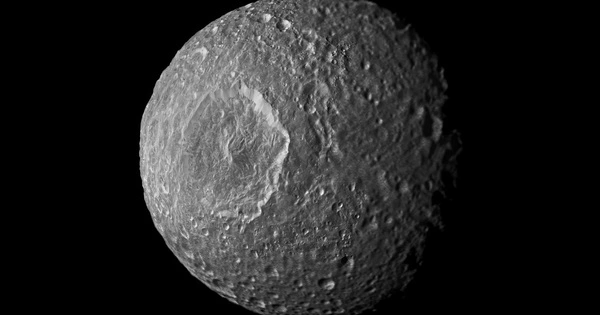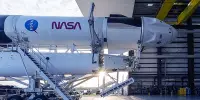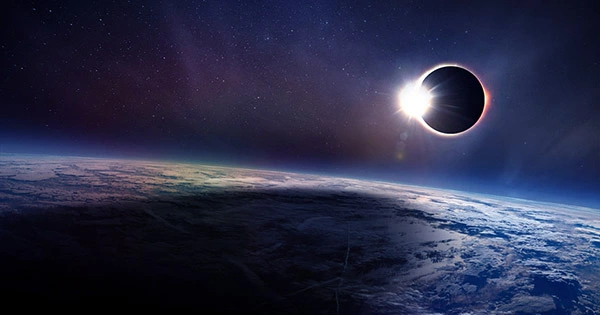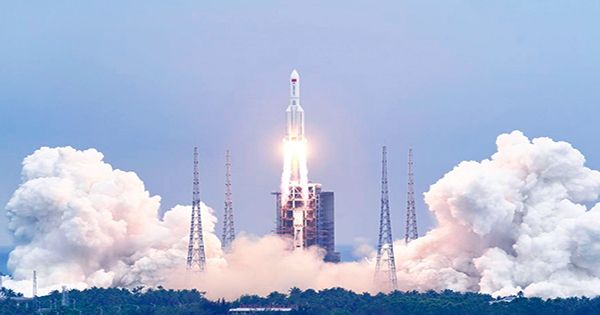Saturn’s numerous moons are thought to have formed at the same time as the Solar System, at least 4 billion years ago. A new model, however, suggests that the orbiting moons are much younger than previously thought, with some forming only a few million years ago.
A new SwRI study describes how the unique populations of craters on two of Saturn’s moons could help determine the satellites’ age and formation conditions. SwRI postdoctoral researcher Dr. Sierra Ferguson surveyed elliptical craters on Saturn’s moons Tethys and Dione using data from NASA’s Cassini mission for this study, which was co-authored by SwRI Principal Scientist Dr. Alyssa Rhoden, Lead Scientist Dr. Michelle Kirchoff, and Lead Analyst Dr. Julien Salmon.
“Our research aims to provide an answer to the larger question of how old these moons are. To answer this question, my colleagues and I measured the size, direction, and location of elliptical craters on the surfaces of these moons” Ferguson explained.
Circular craters are extremely common and can be formed by a variety of impact conditions. However, elliptical craters are more common and form from slow and shallow impacts, making them particularly useful in determining an object’s age because shape and orientation also indicate the trajectory of the impactor.
Our research aims to provide an answer to the larger question of how old these moons are. To answer this question, my colleagues and I measured the size, direction, and location of elliptical craters on the surfaces of these moons.
Dr. Sierra Ferguson
“We can get an idea of what the impactors that made these craters looked like in a dynamical sense and from which direction they might have hit the surface by measuring the direction these craters point,” she said.
Ferguson was not expecting to find a pattern among the elliptical crater directions, but she eventually noticed one along the equator of Dione, one of Saturn’s small moons. There, elliptical craters were overwhelmingly oriented east/west, whereas directions near the moon’s poles were more random.
“We initially interpreted this pattern to be representative of two distinct impactor populations creating these craters,” she said. “One group was responsible for creating the elliptical craters at the equator, while another, less concentrated population may be more representative of the regular background population of impactors around Saturn.”
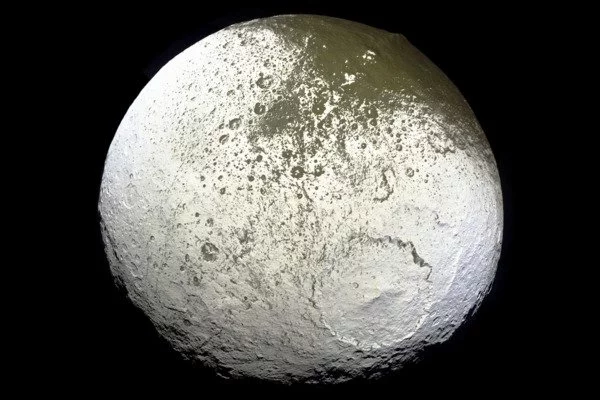
Ferguson also mapped elliptical craters on Tethys, Saturn’s fifth largest moon, and discovered that while a similar size-frequency distribution of craters is unusual for objects orbiting the Sun, it coincides with estimates for the impactor population that appears to exist on Neptune’s moon, Triton. Ferguson’s findings emphasize the importance of considering planetocentric impactors when examining the age of objects in the Saturnian system because that population is thought to be planetocentric, or drawn in by the ice giant’s massive gravity.
“It was really astonishing to see these patterns,” she said.
Ferguson believes the equatorial craters formed from separate disks of debris orbiting each moon, or from a single disk that affected both moons.
“Tethys could be billions of years old if we use Triton as a guide. This age estimate is based on the amount of material available for impacting the surface and the time it was available “Ferguson explained. “Of course, more data will be needed to be certain, but this research tells us a lot. It can help us understand the conditions under which these moons formed. Was this a completely chaotic system, with materials hitting these satellites in every direction, or was there a neat and orderly system?”
Counting the number of craters on an object’s surface, such as an orbiting moon, is one of the primary ways scientists determine its age. The Moon, for example, has numerous impact craters left by asteroids, meteorites, and other bodies that collided with the Moon’s surface over billions of years. The older a moon is, the more impact craters it has on its surface.
Ferguson hopes to be able to compare her data from Saturn’s moons to that of Uranus, another ice giant, in the future. While current data is inconclusive, a mission to Uranus and its moons is one of the flagship missions recommended by the Planetary Science Decadal Survey, which was published in April.
“This is the first step toward a new perspective on the cratering history of these moons, as well as their origin and evolution,” Ferguson said.
